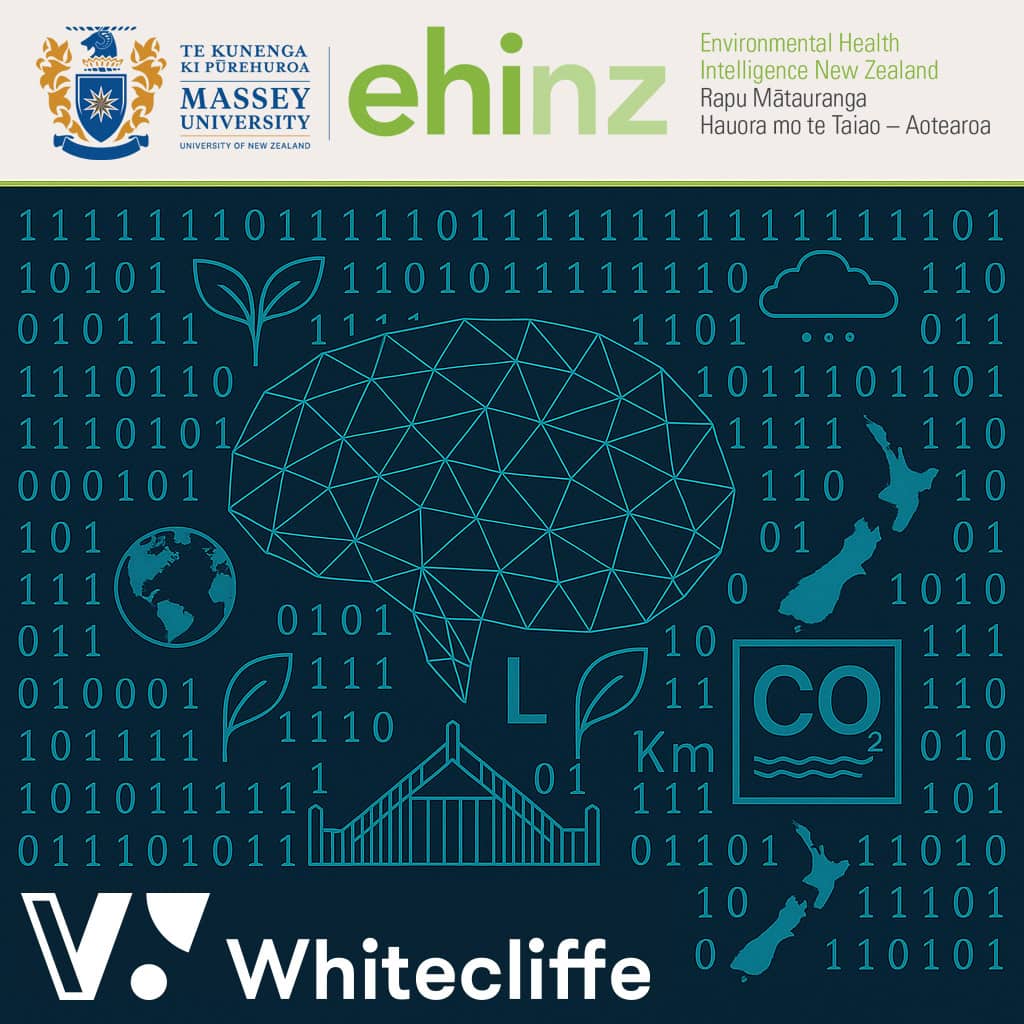
New MoU strengthens data-driven collaboration for public health in Aotearoa.
Te Kunenga ki Pūrehuroa Massey University’s Environmental Health Intelligence NZ (EHINZ) and Whitecliffe’s School of Information Technology share a commitment to using data to improve public health outcomes, an alignment that has led to a formal collaboration.
The newly signed Memorandum of Understanding (MoU) signals a deepening collaboration between the two institutions. It blends EHINZ’s environmental health expertise with Whitecliffe’s strengths in data science and artificial intelligence (AI).
The roots of this partnership began when Rooshan Ghous was a Public Health postgraduate student at Massey under the mentorship of Professor Barry Borman, now Director of EHINZ. That early student–teacher relationship has since evolved into the professional alliance behind this MoU, which will enable joint research, knowledge exchange and real-world data applications.
Whitecliffe Chief Academic Officer Dr Raymond Young says the agreement represents a strategic alignment between two institutions committed to data-driven, socially impactful research.
“By bringing together EHINZ’s expertise in environmental health with Whitecliffe’s capabilities in data science and AI, we are creating meaningful opportunities for our academic community to engage with national priorities. Through data sharing, joint research and innovation, we aim to create insights that directly impact the community. This isn’t just about producing papers or building technical tools, it’s about improving lives.”
EHINZ, based at Massey and funded by the Ministry of Health, plays a critical role in delivering environmental health intelligence to inform public health decisions across Aotearoa. With a team of epidemiologists, statisticians and spatial analysts, the unit manages large, nationally significant datasets. However, limited capacity can constrain the depth and speed of analysis.
Professor Borman says by combining EHINZ’s data resources and Whitecliffe’s applied computing capabilities, this collaboration enriches learning, supports staff research ambitions and strengthens both organisations’ contribution to Aotearoa’s wellbeing.
“We’re especially excited about the potential of using large language models and advanced AI techniques in our work. This collaboration will help us innovate in ways that are not just academically interesting, but also socially relevant,” he says.
Whitecliffe and their School of Information Technology brings expertise in data science and applied AI, with 15 research-active staff and a strong cohort of postgraduate students working at the intersection of computing and public health.
The MoU sets out a number of shared goals, including expanding research networks, facilitating access to data and resources and jointly developing new analytical tools. An early focus is cancer predictive modelling, with future projects expected to explore geospatial mapping, anomaly detection, large language models and the creation of data visualisation dashboards.
Planned activities include student and staff exchanges, joint seminars and workshops and opportunities for co-authored publications and collaborative funding applications. But as leaders on both sides emphasise, the partnership is ultimately about outcomes that matter.
As big data and AI continue to reshape public health, this partnership marks a timely, responsible step forward grounded in mutual respect, shared expertise and a commitment to making a real difference for Aotearoa.